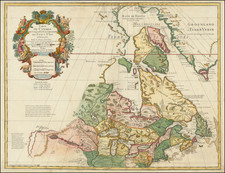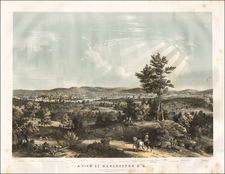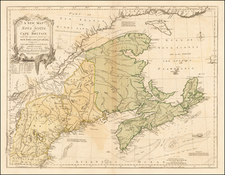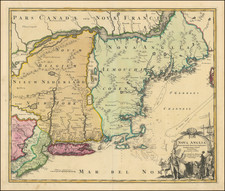Fine example of the mid-19th Century edition of John Tumbull's iconic view of the Death of General Warren at Bunker Hill.
The Death of General Warren at the Battle of Bunker's Hill, June 17, 1775, is an oil painting by the American artist John Trumbull depicting the death of Joseph Warren, during the American Revolutionary War. Warren, an influential Massachusetts politician, had been commissioned a general but served in the battle as a volunteer. He was killed during or shortly after the storming of the redoubt atop Breed's Hill by British troops.
The painting is one of the iconic images of the American Revolution. Trumbull painted several versions of the subject, including the one in the Museum of Fine Arts, Boston (dated between 1815 and 1831), which was commissioned by the Warren family and passed down through the family. He sold the engraving rights for this painting and The Death of General Montgomery in the Attack on Quebec, December 31, 1775, for a highly successful subscription release that greatly enhanced his career.
Trumbull, son of the Governor of Connecticut, was uniquely qualified to paint scenes of the American Revolution, as he served in the Continental army during the war and knew first-hand the characteristics of the American and British armies and the nature of this conflict. He also knew many of the participants of the Revolution and so was able to hear first-hand those events he did not himself participate in. During the battle of Bunker's Hill, Trumbull was stationed in Roxbury, on the far side of Boston from Charlestown, whence he could hear the sounds of the battle.
John Trumbull is perhaps best known as having served as an aide to George Washington during the American Revolutionary War. He then travelled to London to study painting. He is best known for his portrait paintings of George Washington and the large murals that he painted of the American Revolution, which hang in the rotunda of the U.S. Capitol.
Trumbull began with a painting of "The Death of General Warren at Battle of Bunker's Hill" in the fall of 1785, finishing it the follow March. This canvas was called by Benjamin West "the best picture of a modern battle that has been painted" and it was well received by those who viewed it in West's studio. Trumbull had absorbed the style and form of West's work but added to this his own personal knowledge of the individuals and the military dress, weapons and events of the time. Through West, Trumbull met Antonio di Poggi, an artist and print publisher, who agreed to publish the prints for a share of the profits. They decided to look in Paris for an engraver, as no British engraver would dare to do the work on this subject matter. They searched through the summer and early fall of 1786 in Paris and then Frankfurt, with no success. When Trumbull returned to London in October 1786, Poggi kept the paintings to continue to look for an engraver. Poggi finally found Johann Gotthard von Müller, an engraver from Stuttgart, who agreed in July 1788 to undertake the engraving of Trumbull's Bunker Hill.
In 1789, Trumbull sailed to America to work on promoting the sale of his forthcoming prints. At this stage the engraving by Müller was not progressing very fast. Trumbull tried to market his prints when he arrived and awaited proofs, which Poggi promised to send as soon as they were pulled, to show potential subscribers. In 1795, Trumbull visited Stuttgart and was satisfied with the progress Müller was making. Finally in July 1797, Trumbull heard from Müller that the plate was finished.
These three prints, the Battle of Bunker Hill, Death of Montgomery, and Declaration of Independence, are among the most desirable American historical prints ever made. They are quite rare, but do come on the market from time to time.
The present example was issued in the mid-19th Century by Nordheim.









![[ Large Cape Cod Inset ] The River & Gulf of St. Lawrence, Newfoundland, Nova Scotia, and The Banks Adjacent, From The English Admiralty & French Marine Surveys. . . . 1844. Additions To 1857.](https://storage.googleapis.com/raremaps/img/small/85637.jpg)




![[ English Plantations in North America ] A New Map of the most Considerable Plantations of the English In America Dedicated to His Highness William Duke of Glocester.](https://storage.googleapis.com/raremaps/img/small/98233.jpg)